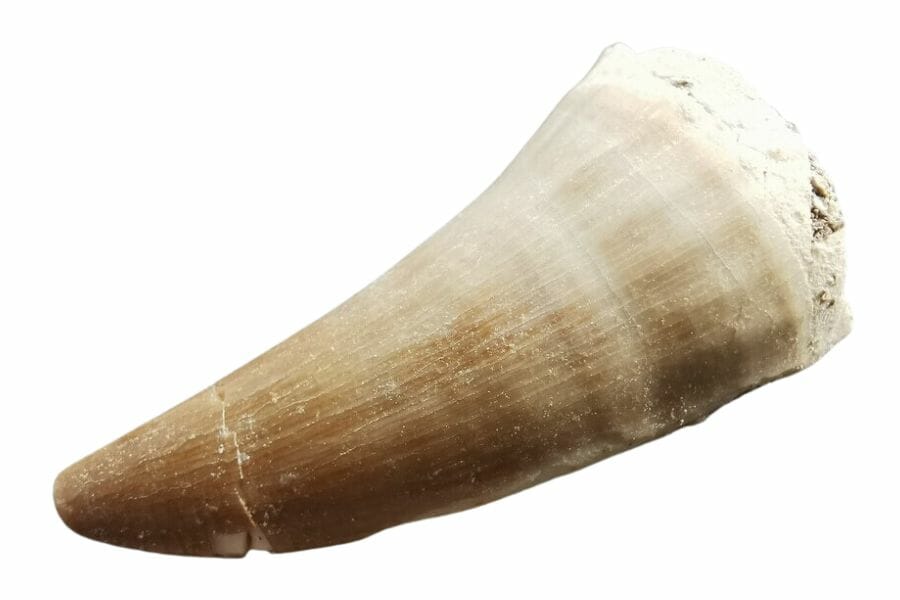Colorado is like a giant outdoor museum for anyone who loves fossils! You can see rare and common Colorado fossils that provide invaluable insights into prehistoric times.
For those keen on finding dinosaur remnants, areas like Dinosaur Ridge and the Garden Park Fossil Area have offered incredible finds, from bones to delicate footprints. But dinosaurs aren’t the only stars of the show.
With such a rich tapestry of history beneath its surface, Colorado provides countless opportunities for both the curious and the experienced to learn and appreciate the world of fossils.
The Fossils Of Colorado You Can Find
Colorado is home to a wide variety of fossils that tell tales from millions of years ago. Dinosaur bones, footprints, and even delicate plant imprints can be found in its diverse landscapes.
Additionally, marine fossils like brachiopods offer insights into times when parts of the state were underwater.
If you also want to find rocks and minerals in Colorado, our guide offers detailed information about where to locate a variety of stunning geological wonders throughout the state.
- The extensive local experience and understanding of our team
- Input from multiple local fossil hunters and fossil groups
- The accessibility of the various locations
- Safety and potential hazards when collecting
- Private and public locations
- A desire to include locations for both experienced fossil lovers and those who are just starting out
Using these weights we think we’ve put together the best list out there for those who love finding great new fossils for our collections!
Common Colorado Fossils
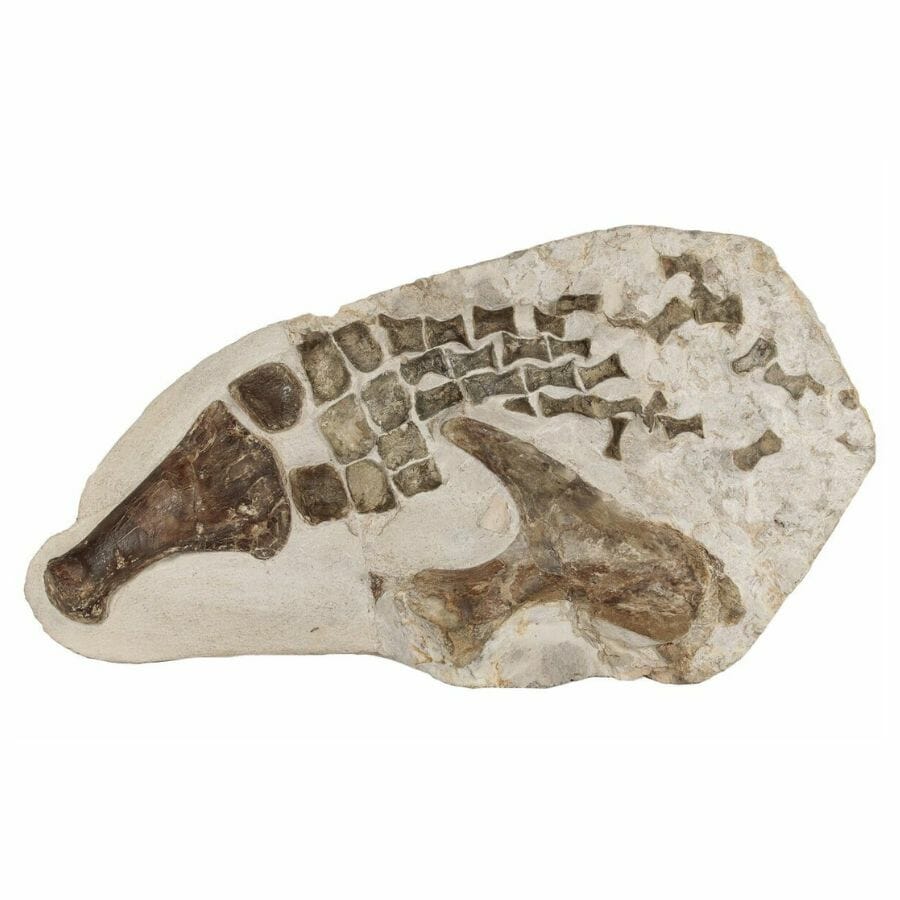
Here is a list of the common fossils of Colorado to see what you can expect to find in this incredible state.
- Brachiopods
- Inoceramus
- Ostrea
- Petrified wood
- Baculites
- Plant fossils
- Fish fossils
- Turtle fossils
- Mammal bones
- Dinosaur bones
Colorado State Fossil – Stegosaurus
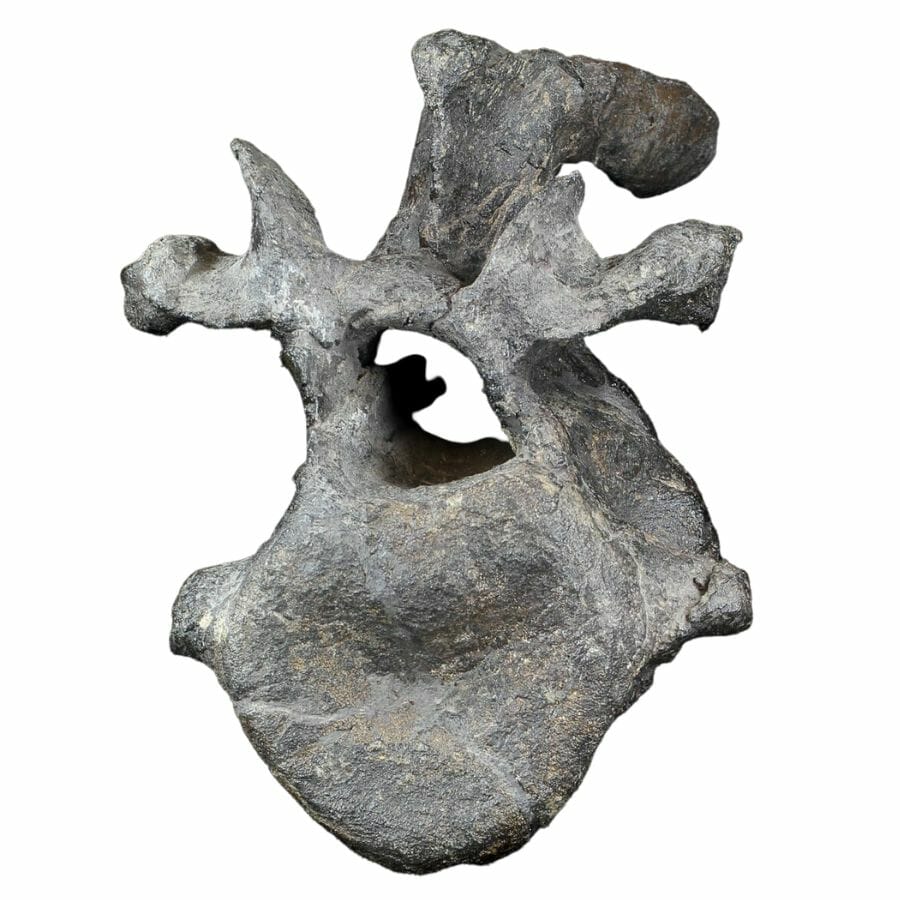
The Stegosaurus is a dinosaur that lived millions of years ago. This creature was a herbivore and known for its unique appearance. It had large, flat plates running down its back and four sharp spikes on its tail, often called a “thagomizer.”
These plates and spikes weren’t just for show; they played a role in defense and possibly in regulating body temperature.
Finding a Stegosaurus fossil is like getting a snapshot of life from a time when these amazing animals roamed the Earth. They provide valuable information about the environment and ecosystems of the past.
Rare Colorado Fossils
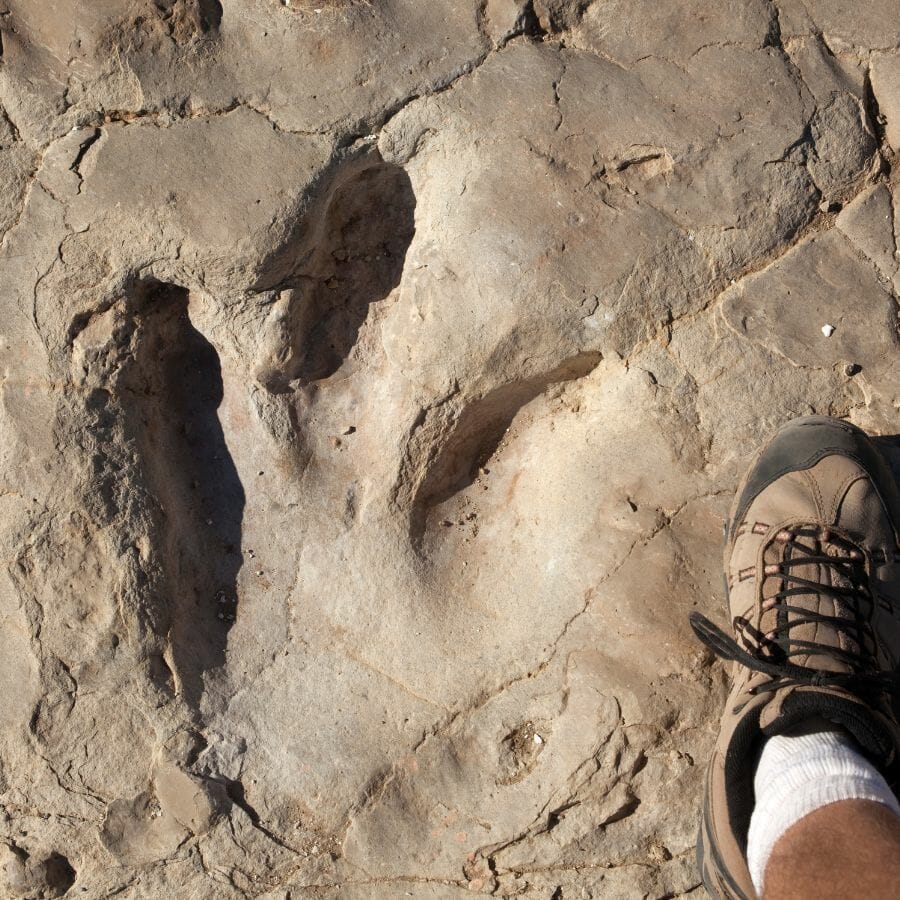
While Colorado is known for some common fossils, it also holds other incredible secrets below the surface. The list that follows highlights valuable rare Colorado fossils that can offer exciting clues about the Earth’s past.
- Dinosaur tracks
- Trace fossils
The Best Places To Find Fossils In Colorado
For those curious about where to look for fossils in this state, there are specific spots that hold more fossil secrets than others. Let’s dive into some of the top locations in Colorado where these incredible pieces of history can be found!
Garden Park Fossil Area
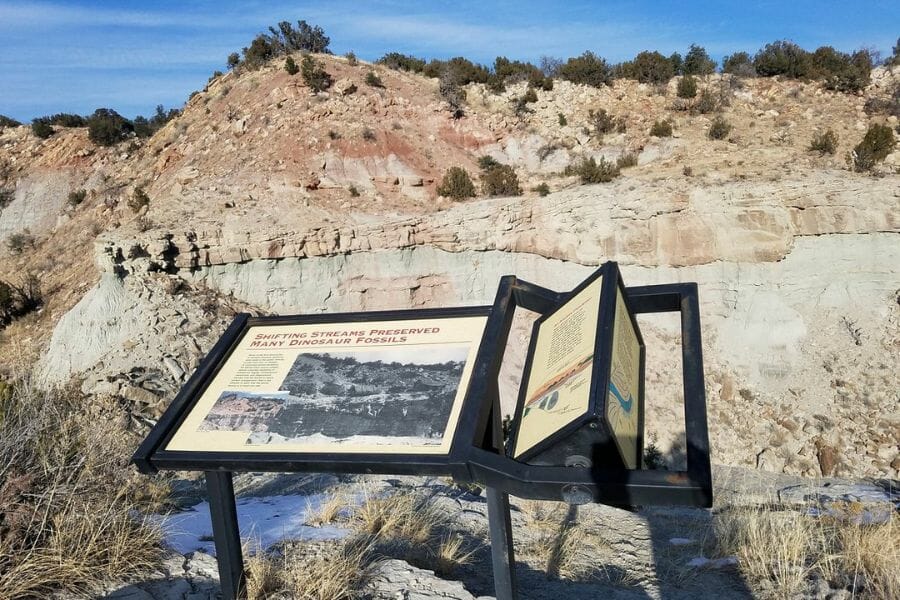
The Garden Park Fossil Area is an exciting spot for anyone interested in Earth’s history. This area is characterized by rolling hills, rocky outcrops, and deep canyons that were formed over millions of years.
The terrain can be rugged, but it’s this very landscape that has preserved many of the incredible fossils of Colorado.
The geology of the region tells tales of times when enormous creatures roamed the land. Layers of sedimentary rock have captured and held onto these fossils, making it a hotspot for paleontological discoveries.
Getting to Garden Park Fossil Area is easy for most adventurers. It’s accessible by main roads and well-marked pathways, making it a popular destination for those eager to explore the wonders of our planet’s past.
Where to find fossils in the Garden Park Fossil Area
Dinosaur enthusiasts can find the remains of large creatures such as the Allosaurus and Ceratosaurus, predominantly in the region’s sedimentary rock layers.
Aside from dinosaur bones, the area also shelters fossils of plants and smaller prehistoric creatures. Most of these discoveries are nestled within the rock outcrops and deeper canyons of the park.
If you want REAL results finding incredible rocks and minerals you need one of these 👇👇👇
Finding the coolest rocks in isn’t luck, it's knowing what to look for. Thousands of your fellow rock hunters are already carrying Rock Chasing field guides. Maybe it's time you joined the community.
Lightweight, mud-proof, and packed with clear photos, it’s become the go-to tool for anyone interested discovering what’s hidden under our red dirt and what they've already found.
Join them, and make your next rockhounding trip actually pay off.
What makes it different:
- 📍 Find and identify 140 incredible crystals, rocks, gemstones, minerals, and geodes across the USA
- 🚙 Field-tested across America's rivers, ranchlands, mountains, and roadcuts
- 📘 Heavy duty laminated pages resist dust, sweat, and water
- 🧠 Zero fluff — just clear visuals and straight-to-the-point info
- ⭐ Rated 4.8★ by real collectors who actually use it in the field
Florissant Fossil Beds National Monument
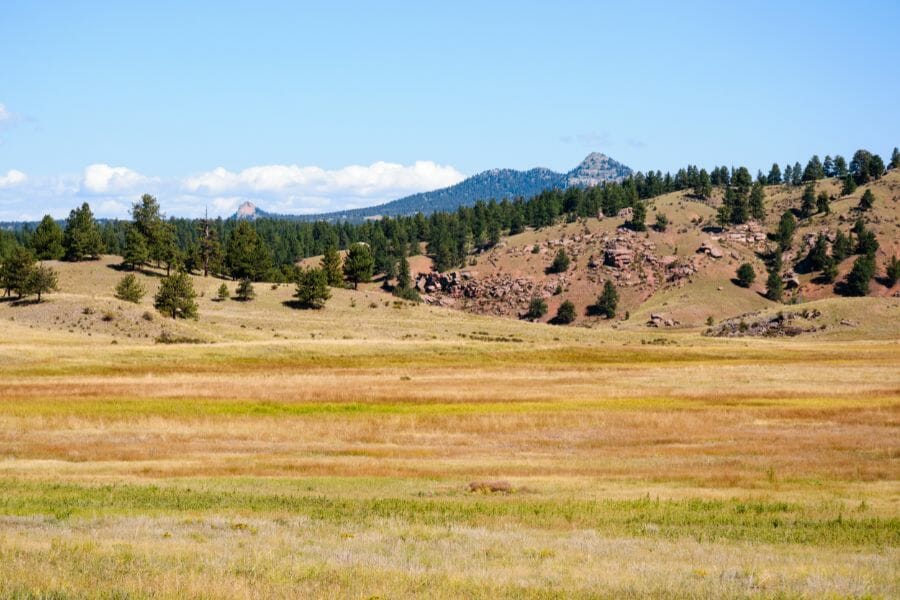
Florissant Fossil Beds National Monument is a special place that captures a snapshot of Earth’s history. Nestled within a blend of meadows and forests, this site boasts rolling hills and scenic landscapes.
The terrain, while gentle in many parts, offers visitors a chance to walk through time, with pathways guiding them to areas rich in geological significance.
At the heart of this monument’s geology are layers of shale, which have preserved delicate plant imprints, insects, and more from millions of years ago.
Volcanic eruptions from nearby areas once buried the region in ash, helping to create these detailed fossils.
Main roads lead directly to the site, and there’s ample signage to guide travelers. Once there, well-marked trails and informative displays help visitors navigate the area and learn about its wonders.
Where to find fossils in the Florissant Fossil Beds National Monument
Within the Florissant Fossil Beds National Monument’s layers of shale, visitors can find detailed imprints of plants and insects.
Many of these fossils have been preserved due to volcanic ash from nearby eruptions that settled over the region.
These common Colorado fossils are primarily found along the monument’s well-marked trails, where erosion has exposed the rich layers of history beneath.
Dinosaur Ridge
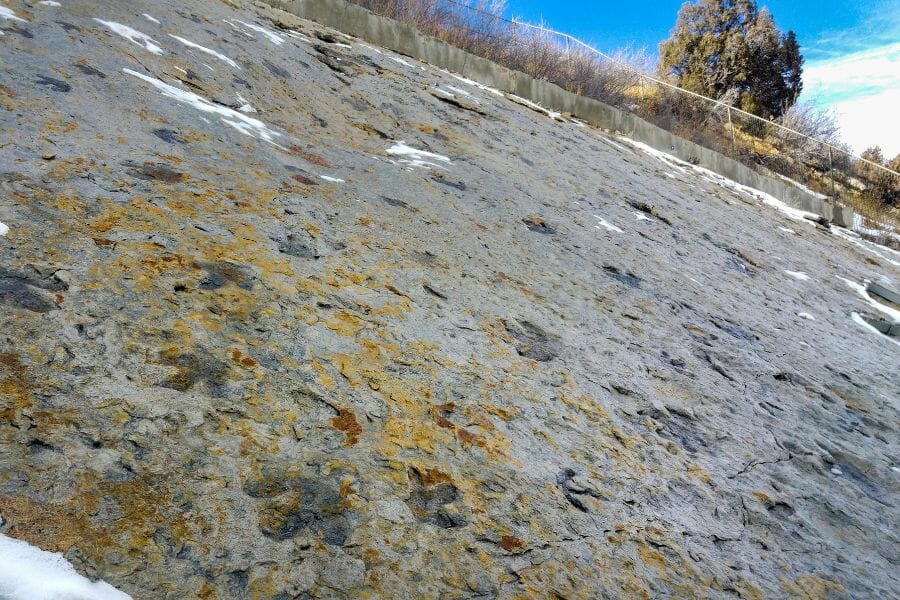
Dinosaur Ridge is a captivating spot for those who are passionate about Earth’s history. This location boasts a series of outcrops and trails that display footprints and bones from prehistoric creatures.
The geology of the area is characterized by exposed sedimentary rocks, which over time have revealed the tales of dinosaurs and other beings that once roamed the land. For those interested in fossil hunting in Colorado, this ridge is a must-visit.
The terrain varies, with some smooth trails suitable for casual strolls and others that might require a bit more hiking effort. However, the well-marked paths and informative signs make it accessible for adventurers of all ages.
You can reach Dinosaur Ridge via main roads leading directly to its entrance, ensuring an adventure that’s both educational and fun.
Where to find fossils in Dinosaur Ridge
Along the ridge’s main trail, visitors can spot distinct dinosaur footprints embedded in the rocks. In addition to tracks, there are areas where bones are exposed, offering a closer look at the skeletal structure of these prehistoric giants.
These finds are concentrated in the sedimentary rock outcrops, making them accessible for observers to study and appreciate.
Fossil Ridge Wilderness
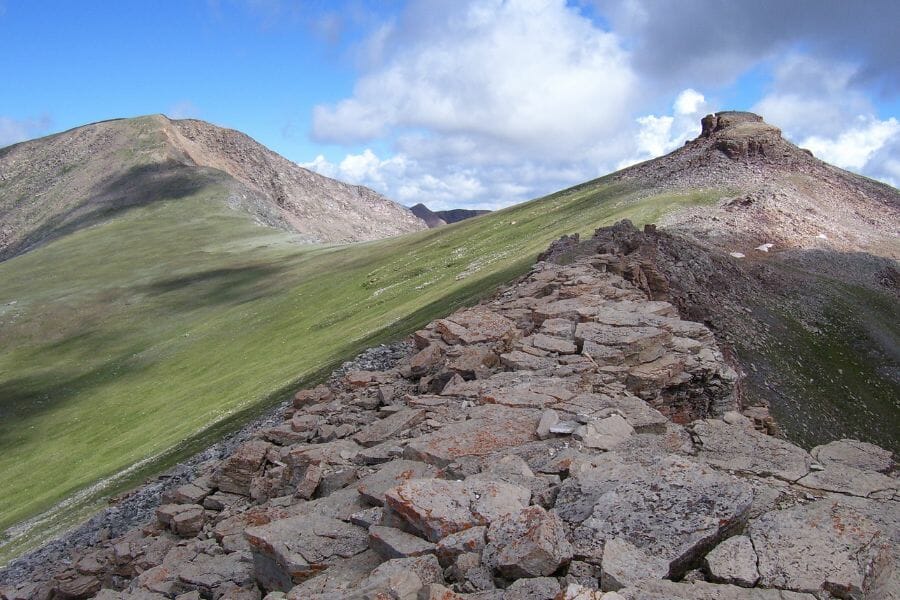
Fossil Ridge Wilderness is a captivating destination that speaks volumes about Earth’s past. Nestled within a series of high mountain peaks and alpine meadows, this area offers both scenic beauty and geological wonders.
The terrain is rugged, with steep inclines and rocky outcrops, making it a challenge for even seasoned hikers.
Despite its name, Fossil Ridge Wilderness isn’t primarily known for fossils in Colorado; instead, it’s the unique limestone formations that draw attention.
These formations contain remnants of sea creatures from a time when the region was underwater.
As for accessibility, reaching the wilderness requires a bit of effort. There are various trailheads leading into the area, and while the paths are well-marked, it’s essential to be prepared for a mountainous adventure.
Where to find fossils in Fossil Ridge Wilderness
Within the limestone formations of the Fossil Ridge Wilderness, one can find remnants of sea creatures, such as shells and marine organisms.
These fossils are primarily located in the exposed limestone outcrops scattered throughout the wilderness.
Explorers keen on observing these remnants should focus on areas where erosion has unveiled the rock layers, making the fossils more accessible.
Picket Wire Canyonlands
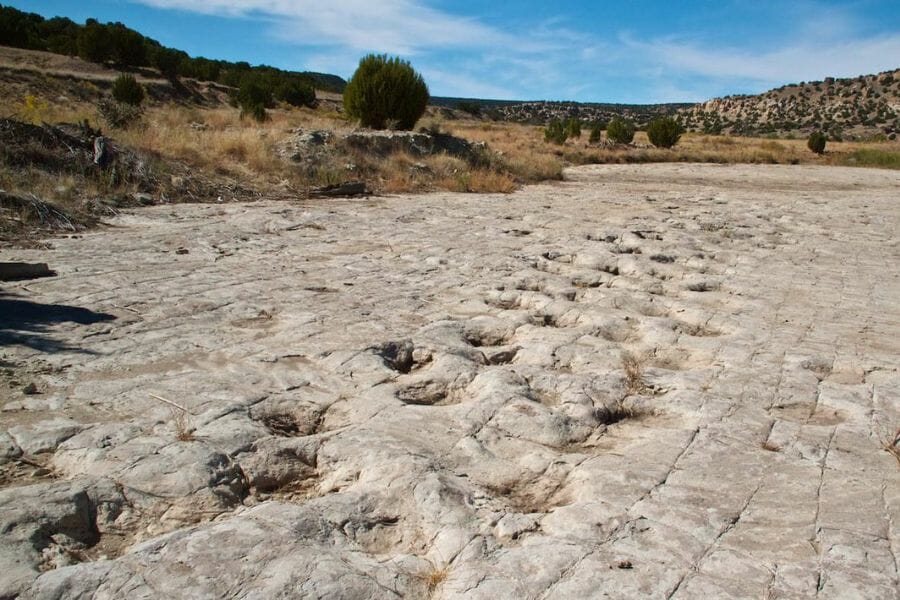
Picket Wire Canyonlands has deep canyons carved by the Purgatoire River. The terrain is a mix of rocky outcrops, vast plateaus, and river valleys, offering a diverse backdrop for exploration.
The geology here is especially noteworthy, as it preserves a rich history of life from millions of years ago.
For those passionate about fossil hunting in Colorado, Picket Wire is a go-to spot. It’s home to one of the largest dinosaur trackways in North America.
To reach Picket Wire Canyonlands, visitors will need to traverse several miles of trails, some of which can be challenging due to the area’s rugged nature.
However, the journey is well worth the effort, with every step revealing more about the Earth’s fascinating past.
Where to find fossils in Picket Wire Canyonlands
Picket Wire Canyonlands is renowned for its extensive dinosaur trackways. These tracks are primarily located along the banks of the Purgatoire River, where the passage of time and erosion has revealed their presence.
Additionally, the area houses fossils of various prehistoric plants and animals within its rock layers. As explorers traverse the trails and riverbeds, they can come across these remnants, offering a unique glimpse into life from millions of years ago.
Other Top Places To Find Colorado Fossils By Region
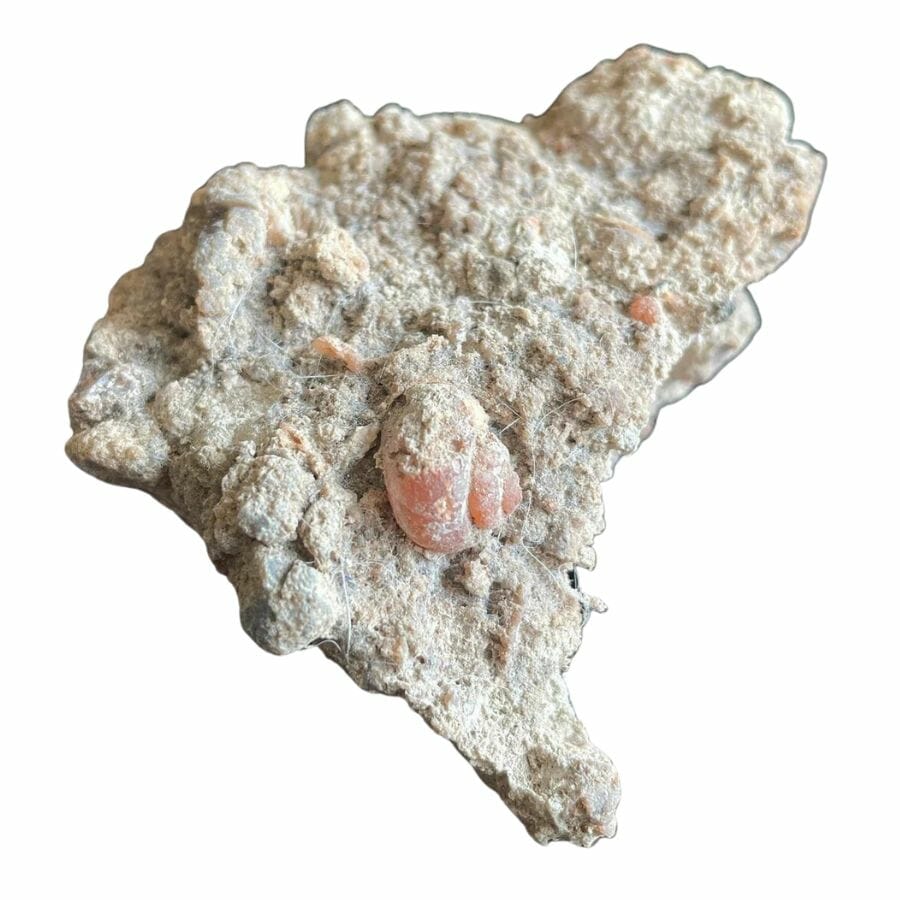
From deep canyons to rolling plains, the state is a treasure trove for fossil enthusiasts. Here are the other areas in Colorado where these amazing fossils are waiting to be uncovered.
| Location | Fossils |
| Arboles, Archuleta County | Periptychus, Phenacodus |
| Pritchett, Baca County | Plesiosaur, Thalassomedon |
| Longmont, Boulder County | Crenella, Ostrea, Veniella, Lucina, Cardium, Callista, Mactra, Dentalium, Lunatia, Melania, Cylichna, gastropods, reptile teeth, Inoceramus, fish vertebrae, Plesiosaur teeth |
| Platteville, Boulder County | Gastropods, pelecypods, teredo wood, fish vertebrae, reptile teeth |
| Wellington, Boulder County | Yoldia, Baculites, Avicula, Veniella, Dentalium, Mactra, fish scales, shark teeth, reptile teeth, Veniella, Inoceramus |
| Monarch Hill, Chaffee County | Halysites, Diphyphyllum, Zaphrentis, Heliolites, Stromatopora, Orthoceras, Athyris, Camarotoechia, Orthothetes, Productella, Spirifer, Syringopora, Fenestella, Productus, Spiriferina |
| Trout Creek Pass, Chaffee County | Lingula, mollusks, crustacea, conodonts, Dictyorhabdus, Astraspis, Eriptychius |
| Northeast Crowley County | Baculites, Lucina, Scaphites |
| Cedaredge, Delta County | Dinosaur bones, dinosaur tracks |
| Denver, Denver County | Fossil leaves, dinosaur tracks |
| Scotch Creek, Dolores County | Myalina |
| Colorado River, Eagle County | Spirifer, Camarotoechia, Schizophoria, Productella, Athyris |
| Eagle Bird Gulch, Eagle County | Obolidae, Westonia, Spirifer, Schuchertella, Crania, Fenestella, pelecypods, crinoid stems, Zaphrentis, Chonetes |
| Williams Canyon, El Paso County | Trilobite tracks |
| Canon City, Fremont County | Allosaurus, Amphicoelias, Brachyrophus, Camarasaurus, Caulodon, Dryosaurus, Dryptosaurus, Epantherias, Hypsirophus, Stegosaurus, Symphyrophus, Tichosteus, Amphicotylus, Goniopholis, Glyptops, crinoid stems, corals, porifera, brachiopods, mollusks, crustacea, Lingula, conodonts, Dictyorhabdus, Astraspis, Eriptychius, dinosaur fossils |
| Glenwood Canyon, Garfield County | Mussels, snails, and squids |
| Haystack Mountain, Gilpin County | Corbula fragments, fish scales, Goniatites |
| Whiteley Peak, Grand County | Halymenites, Platanus, Baculites, Avicula, Chaetetes, Serpula, Nucula, Inoceramus, Ostrea, Crenella, Baculites, Scaphites, Heteroceras |
| Deadman’s Creek, Gunnison County | Crinoid stems, Receptaculites, shells |
| Gardner, Huerfano County | Paramys, Viverravus, Allognathosuchus, Saniwa, Cheilophis, bird bones, Hadrianus, Paraglyptosaurus, Odaxosaurus, Xestops, Echmatemys, Ambloctonus, Diacodexis, Hyracotherium, Knightomys, Lambdotherium, Leptotomus, Microsyops, Prolimnocyon, Hyopsodus, Miacis, Phenacodus, Reithroparamys |
| Promontory Bluff, Huerfano County | Paraglyptosaurus, Hadrianus |
| Rabbit Ears, Jackson County | Vivipara |
| Bear Mountain, Jefferson County | Inoceramus |
| Morrison, Jefferson County | Pelecypods |
| Ignacio, La Plata County | Apatemys, Carpodaptes, Chriacus, Compsemys, Dissacus, Ectypodus, Ignacius, Labidolemur, Leptacodon, Marsupicarnivora, Nannodectes, Navajovius, Ogygoptynx, Peradectes, Periptychus, Phenacodus, Phenacolemur, Platymastus, Thryptacodon, Xenacodon, Zanycteris, Arctocyon, Crocodiles, Ignatiolambda |
| Mason Pocket, La Plata County | Mammal fossils |
| Spring Canyon Dam, Larimer County | Inoceramus, Ostrea |
| Cedar Creek, Logan County | Adjidaumo, Aepycamelus, Archaeotherium, Caenopus, Centetodon, Ceratogaulus, Cosoryx, Cynarctus, Daphoenus, Dinictis, Domnina, Ectoconus, Eumys, Geolabis, Heliscomys, Hesperocyon, Hypertragulus, Hyracodon, Ischyromys, Leptictis, Leptomeryx, Megalagus, Merychippus, Merycochoerus, Mesocyon, Mesohippus, Miniochoerus, Miolabis, Mustela, Mylagaulus, Palaeogale, Palaeolagus, Paradjidaumo, Pelycomys, Peratherium, Pliohippus, Poebrotherium, Prosciurus, Protohippus, Protolabis, Protomeryx, Ramoceros, Stibarus, Tomarctus, Ustatochoerus, Aciprion, Calamagras, Cremastosaurus, Diacium, Exostinus, Neurodromicus, Peltosaurus, Platyrhachis |
| Orellan-Lewis Creek, Logan County | Archaeotherium, Poebrotherium, Leptomeryx, Hypertragulus, Hypisodus, Merycoidodon, Miniochoerus |
| Fruita, Mesa County | Gastropods, gatroliths, Apatosaurus |
| Grand Junction, Mesa County | Dinosaur bones, dinosaur tracks, Glyptosaurus |
| Creede | Pine cones and needles, willow leaves, insects |
| Alheit Pocket Quarry, Moffat County | Hyopsodus, Leptacodon, Peradectes, Phenacodus, Tetonius |
| East Alheit Pocket Quarry, Moffat County | Allognathosuchus, Anemorhysis, Apatemys, Apheliscus, Arfia, Cantius, Chriacus, Craseops, Diacodexis, Didelphodus, Didymictis, Ectocion, Ectypodus, Haplomylus, Homogalax, Hyopsodus, Hyracotherium, Leptacodon, Macrocranion, Microsyops, Neoliotomus, Niptomomys, Nyctitherium, Paramys, Parectypodus, Parectypodus, Phenacodus, Phenacolemur, Prodiacodon, Prolimnocyon, Prototomus, Scenopagus, Talpavus, Teilhardina, Tetonius, Thryptacodon, Uintacyon, Viverravus, Wyolestes, Squamata, turtles |
| Dolores River, Montrose County | Paleoniscoid, coelacanth, Rutiodon, Ceratodus, Phytosaurs, Phlebopteris, Osmundacaulis, Neocalamites, Zamites, Araucarioxylon, Woodworthia, petrified wood, pelecypods, worms, Cionichthys, Semionotus, Synorichthys, Tanaocrossus, Turseodus |
| Naturita, Montrose County | Dinosaur footprints |
| La Junta, Otero County | Dinosaur bones, Ostrea, small shark teeth, thin flatfish scales, Prionocyclus, Inoceramus |
| Boreas Pass, Park County | Ostrea, Inoceramus, Trigonarca, Scaphites, Prionocyclus |
| Pueblo, Pueblo County | Ammonites, Inoceramus |
| Piceance Creek Basin, Rio Blanco County | Knightia |
| Elk River, Routt County | Inoceramus, Scaphites, Portheus, Ichthyodectes, Baculites, Ostrea |
| Ouray, San Juan County | Corals, worms, brachiopods, mollusks, Myalina |
| Placerville, San Miguel County | Diadectes |
| Allison, Summit County | Periptychus, Phenacodus, Ectiocion |
| Big Springs, Weld County | Geochelone, Aepycamelus, Aphelops, Desmatippus, Dromomeryx, Miolabis, Scaphohippus, Tomarctus |
| East Valley, Weld County | Protolabis, Prosynthetoceras |
| Fossil Hill, Weld County | Aphelops |
| Horse and Mastodon Quarry, Weld County | Aelurodon, Aepycamelus, Aphelops, Cosoryx, Desmatippus, Dromomeryx, Homocamelus, Hypohippus, Megahippus, Merychippus, Metalabis, Miolabis, Protolabis, Ustatochoerus, Zygolophodon, Geochelone |
| Horsetail Creek, Weld County | Stylemys, Testudo |
| Keota Road, Weld County | Aphelops |
| Pawnee Buttes, Weld County | Agriochoerus, Amphicyon, Aphelops, Blastomeryx, Daphoenus, Daphoenus, Eumys, Hesperocyon, Hypisodus, Hyracodon, Megalagus, Merychippus, Merychyus, Miniochoerus, Miomastodon, Moropus, Palaeogale, Palaeolagus, Paradjidaumo, Parahippus, Protohippus, Protolabis, Geochelone, Prosynthetoceras |
| Arickaree, Yuma County | Teleoceras |
| Ute Trail Head | Diatryma |
Common Questions About Fossil Hunting In Colorado
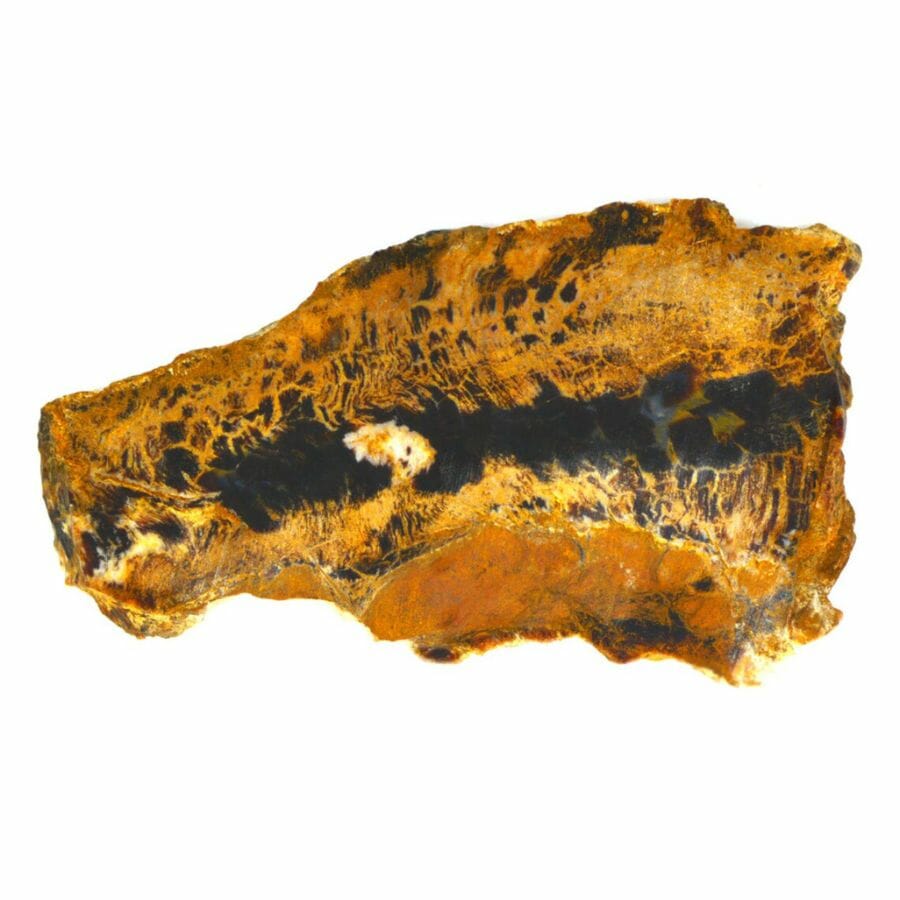
There’s so much to learn and explore about these preserved remnants of the past. Delving into common questions can help uncover the mysteries and excitement surrounding Colorado’s fossilized treasures.
Can you find megalodon teeth or shark teeth in Colorado?
Megalodon teeth or shark teeth are fascinating finds for any fossil enthusiast. However, when it comes to discovering such fossils in Colorado, the chances are slim.
The reason is simple: during the time megalodons and many other sharks lived, much of Colorado was not covered by the oceans where these creatures thrived.
Instead, the state had diverse environments ranging from coastal swamps to upland forests.
If you’re set on finding shark teeth, you might have better luck exploring areas that were historically submerged under ancient oceans.
Is it illegal to collect fossils in Colorado?
In Colorado, the rules about collecting fossils vary depending on where you are and what you’re collecting. On private lands, you need the landowner’s permission to collect any fossils.
On federal lands, such as those managed by the Bureau of Land Management or the U.S. Forest Service, casual collecting of common invertebrate and plant fossils is generally allowed for personal use.
However, collecting vertebrate fossils, like dinosaur bones, is not permitted without a special permit. Additionally, valuable rare Colorado fossils are protected and cannot be collected without appropriate permissions.
This is to preserve these important pieces of history for scientific research and public education.
It’s also crucial to note that state parks, national parks, and monuments have their own set of rules, and collecting fossils in these areas is typically prohibited.
Always check the specific regulations for the area you’re in and remember that leaving fossils allows others to enjoy and learn from them too.
Can you find dinosaur bones in Colorado?
The state has been a significant site for many dinosaur finds over the years. From large herbivores like the Apatosaurus to fierce predators like the Allosaurus, many types of dinosaurs once roamed the region.
Dinosaur bones in Colorado can be found in various places, especially in areas with exposed rock layers that date back to the Mesozoic Era. While some of these areas allow for public exploration, others are designated for scientific research.
If you’re hoping to see these incredible fossils up close, numerous museums and visitor centers showcase the state’s rich paleontological history.
How do you identify the fossils that you find?
First, observe the shape, size, and texture of the fossil. Often, the form of the fossil can give clues; for example, leaf imprints or shell shapes are quite distinct.
Then, consider the type of rock it’s found in, as certain fossils are more common in specific rock formations.
Next, compare the fossil to pictures in a fossil identification guidebook or a reliable online database. These resources usually have clear images and descriptions that can help match what’s been found.
Additionally, the location of the find can give hints, as certain regions are known for specific fossil types.
If you’re unsure, it’s always a good idea to take clear photographs and show them to experts. Many museums, universities, or geology clubs have experts who love to help enthusiasts identify their finds.
Lastly, practice makes perfect. The more fossils one examines and learns about, the better they’ll become at quickly recognizing and identifying them.
Our Favorite Places To Buy Fossils In Colorado
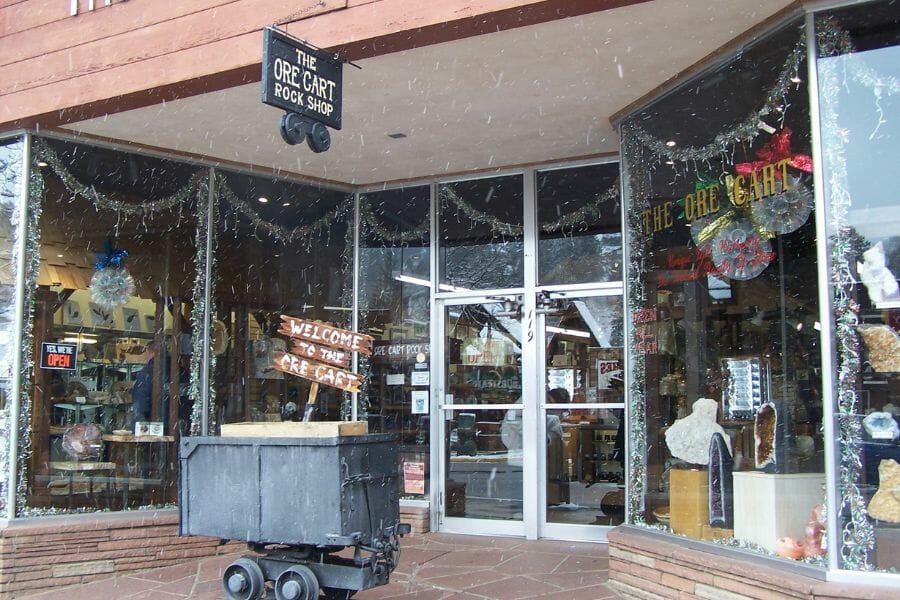
Colorado is not only a hub for finding fossils but it’s also a great place to buy them. Here are some of the top locations in Colorado where these fascinating relics can be bought.
- Ore Cart Rock Shop – 119 W Elkhorn Ave, Estes Park, CO 80517
- Rustic Relics – 10025 W Kentucky Dr, Lakewood, CO 80226
- Eggers Lapidary – 16950 S Golden Rd, Golden, CO 80401
- The Gold Mine Rock Shop – 0028 Co Rd 3A, Cañon City, CO 81212
- The Rock Doc – 17897 US Hwy 285, Nathrop, CO 81236
- Lithos – Mineral, Fossil, Meteorite, Book and Hobby Shop – 5695 Yukon St, Arvada, CO 80002
- Geofossiles Rock Shop – 5631 N Academy Blvd, Colorado Springs, CO 80918
- Nature’s Own – 5 E 1st St, Nederland, CO 80466 and 201 Linden St # 101, Fort Collins, CO 80524

